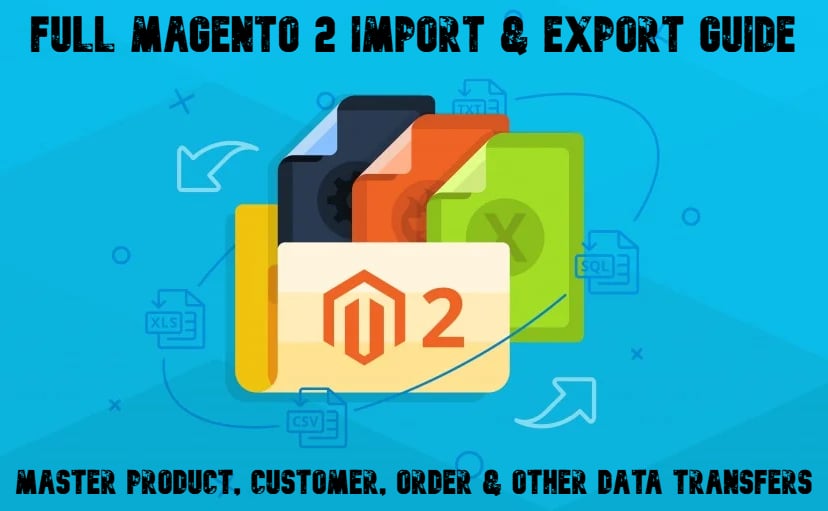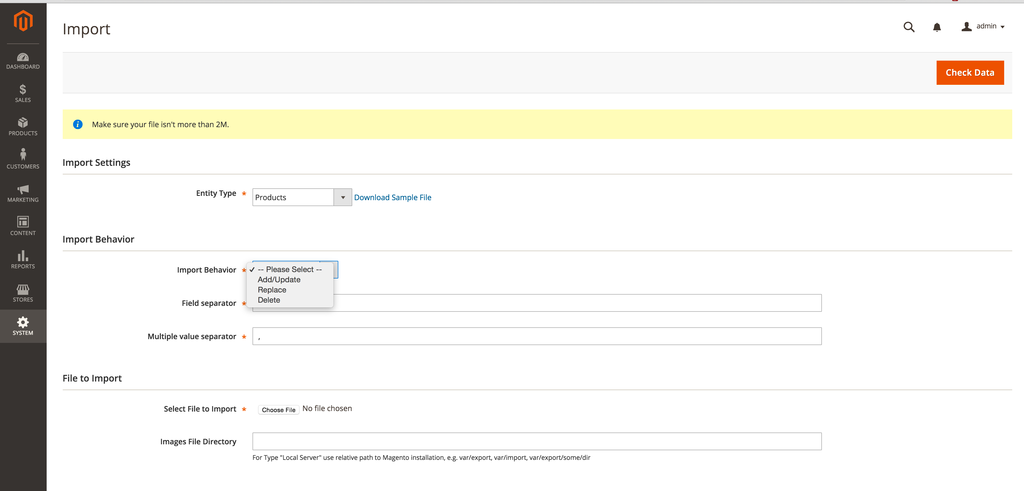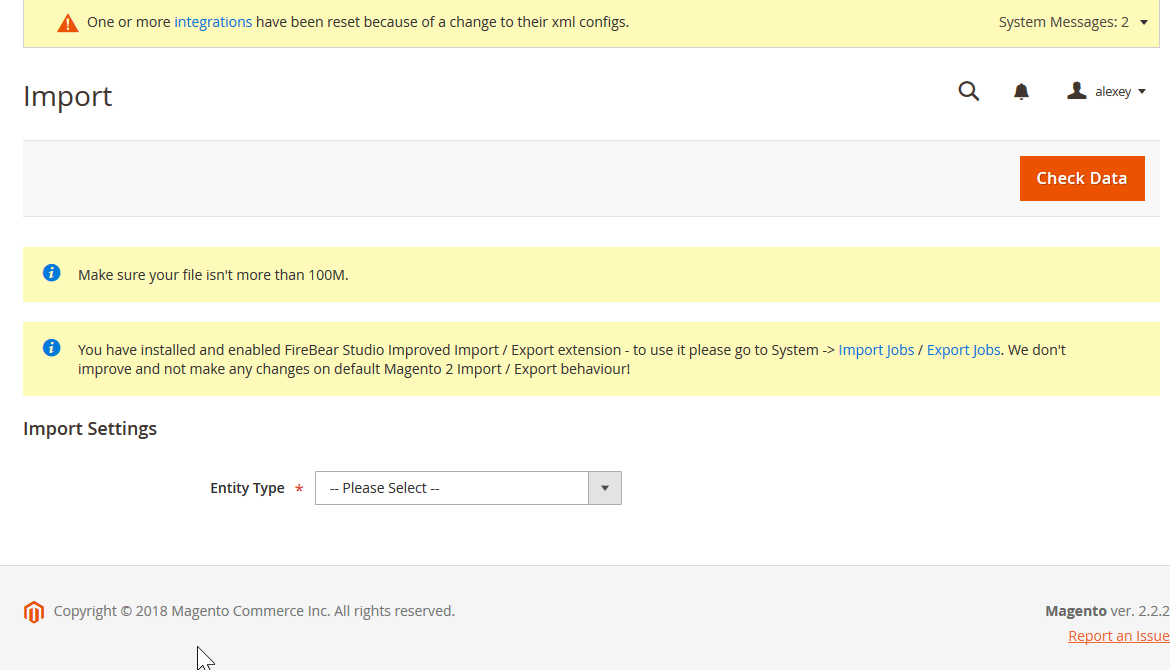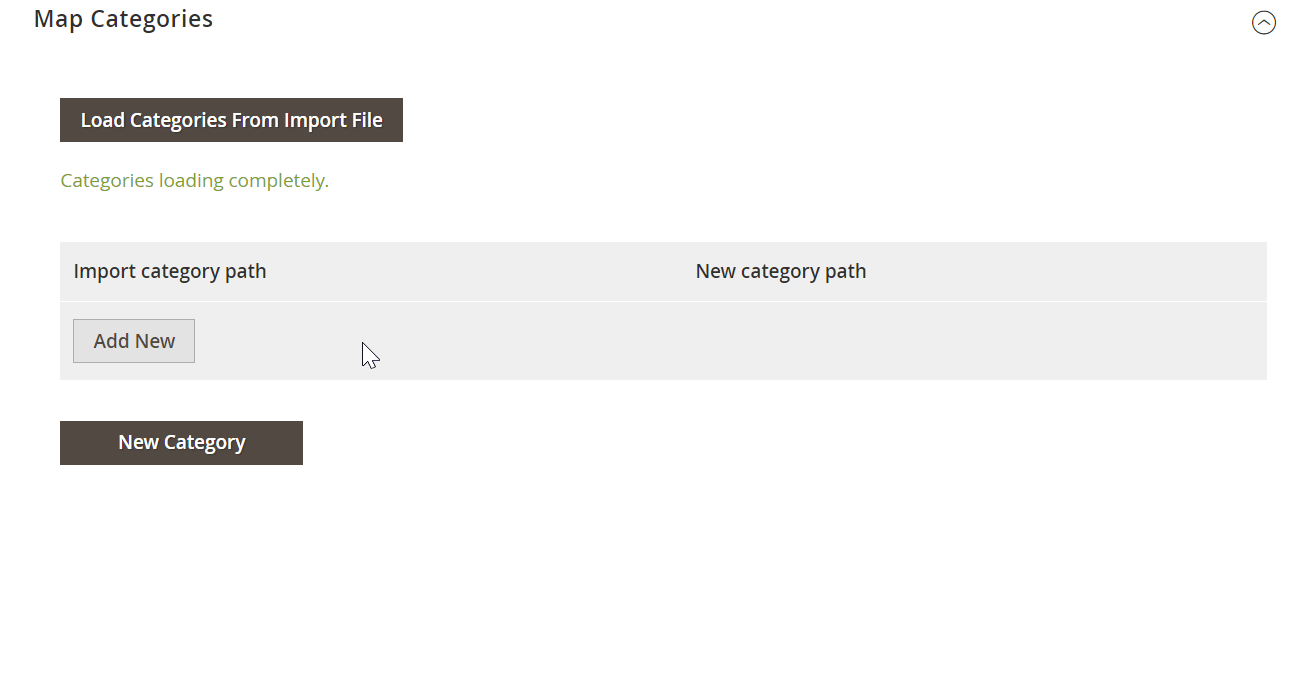Full Magento 2 Import & Export Guide (2025): Master Product, Customer, Order & Other Data Transfers

Magento 2 import and export processes are essential for managing your store’s data, but they can be surprisingly complex. From handling products and customers to orders and custom entities, these operations require technical knowledge, precise formatting, and sometimes third-party tools. That’s why we’ve created this comprehensive resource.
Instead of searching through dozens of separate blog posts, you’ll find everything you need right here — neatly grouped and organized. This Magento 2 import/export guide brings together our most useful tutorials, walkthroughs, and troubleshooting tips. Whether you’re looking for step-by-step Magento 2 product import instructions, exploring Magento import from external systems like Google Sheets, or diving into API-powered Magento export workflows — this list has you covered.
We cover both the default Magento 2 import/export features and powerful alternatives like the Improved Import & Export extension. You’ll learn how to automate routine data transfers, work with custom attributes, and unlock features missing in the Open Source edition.
Start below to master every aspect of Magento 2 import and export — from the basics to advanced automation strategies.

Table of contents
- What is Magento 2 Import?
- Top Practical Examples for Magento 2 Import and Export
- General Magento 2 Import Instructions: Start Here
- Magento 2 Product Import: Step-by-Step Guides by Product Type
- Advanced Magento 2 Import & Export Use Cases: Beyond Basic Product Updates
- Miscelaneous Magento 2 Import & Export Tips & Tricks
- Final Words: Master Magento 2 Import & Export for Seamless Data Management
- FAQ: Magento 2 Import & Export
What is Magento 2 Import?
Magento 2 import is the process of transferring structured data — such as products, customers, orders, categories, and more — into your Magento 2 store from external sources like CSV files, databases, or third-party systems. It’s a fundamental feature that allows store owners to manage large amounts of data quickly and efficiently, without the need for manual entry.
Usually, this process is associated, but not limited to, with the following data types:
- Products (simple, configurable, bundled, etc.)
- Customers and customer addresses
- Orders
- Categories
- Stock and inventory
- Price updates
- Custom attributes
- Advanced pricing
- CMS blocks and pages (with third-party tools)
By using Magento data import, you can streamline store setup, speed up catalog management, and maintain data consistency across platforms, especially when migrating from another system or syncing with an ERP.
On the other hand, the Magento export process allows you to extract store data for backup, migration, integration, or reporting purposes. Together, Magento 2 import export features create a two-way bridge for data movement, making them essential for both daily operations and long-term growth.
However, the native tools offer limited flexibility. For instance, the default importer lacks support for orders, categories, advanced prices, and many more entities and is limited to manual file uploads and CSV. That’s why many merchants turn to extended solutions like the Improved Import & Export extension to unlock more advanced features such as support for all entities, including B2B, scheduled jobs, API integrations, and multiple file formats and sources.
Top Practical Examples for Magento 2 Import and Export
Whether you’re launching a new store or maintaining an existing one, Magento 2 import and export operations play a critical role in simplifying day-to-day tasks and enabling large-scale data management. Below are the most common real-world use cases where import/export features become essential:
✅ Mass Product Updates
Updating hundreds — or even thousands — of product details manually is time-consuming and error-prone. With Magento import products CSV, you can bulk-update prices, descriptions, stock levels, and custom attributes in just a few clicks. This is especially useful during seasonal sales or catalog overhauls.
✅ Customer Data Migration
If you’re moving from another e-commerce platform (like Shopify, WooCommerce, or Magento 1), you’ll need to import customers into your Magento 2 store. Using a properly formatted CSV file, you can migrate customer profiles, billing/shipping addresses, and account details without losing important information.
✅ Order History Transfers
Retaining historical sales data is critical for reporting and customer service. While Magento does not support native order import, many merchants use extensions to import orders from previous systems or marketplaces like Amazon and eBay to centralize operations in Magento.
✅ ERP and CRM Integrations
Magento stores often sync with third-party systems like ERPs, CRMs, or accounting tools. In such cases, Magento 2 import and export features serve as the connection point, allowing regular data exchange for inventory levels, product updates, customer records, and order statuses.
✅ Catalog Setup for New Stores
When launching a new store or expanding into a new region, the fastest way to populate your catalog is via bulk Magento import. By preparing a structured product CSV, you can import thousands of SKUs, complete with categories, media, prices, and SEO data.
✅ Multi-Store Management
For merchants running multiple storefronts (e.g., B2C and B2B), Magento export helps replicate products, customers, and CMS content across instances, while Magento 2 import allows efficient updates across those stores with minimal effort.
In all these scenarios, Magento’s default tools can handle the basics, but more complex needs (like scheduling, mapping, and API support) often require advanced extensions. No matter your use case, mastering Magento 2 import/export functionality saves time, reduces human error, and improves data accuracy across your store ecosystem. Below, you will find dedicated guidance for each scenario.
General Magento 2 Import Instructions: Start Here

Before diving into specific data types, it’s essential to understand how Magento 2 import and export processes work at a foundational level. This section brings together essential guides that explain the core principles of Magento data import, export formats, migration strategies, and advanced integration techniques.
Each linked resource below provides step-by-step instructions, best practices, and sample files to help you master Magento’s import/export system — whether you’re a beginner or managing enterprise-level data.
📘 The Complete Guide to Magento 2 Product Import/Export
If you’re new to Magento 2 import export, this is the best place to begin. This comprehensive guide explains everything from the basics of import table formatting to advanced field mapping. You’ll learn:
- What file types Magento supports (CSV, XML via extensions)
- How to structure import tables correctly
- What attributes and values are required for product import
- How Magento treats different product types and variations
This article sets the foundation for all other Magento import operations.
👉 Read the full guide to Magento 2 product import/export.
📗 How to Import Products to Magento 2 from Google Sheets
Looking for a faster, more collaborative way to import data into Magento? This guide shows you how to import products to Magento 2 directly from Google Sheets, making real-time collaboration and data management much simpler.
Inside, you’ll discover:
- How to connect Google Sheets to your Magento 2 store
- How to format your sheets for successful data transfer
- A link to the Master Table — a detailed sheet listing all importable entities and attributes
This is especially useful for merchants managing large catalogs or working with remote teams.
👉 Learn how to import from Google Sheets to Magento 2.
📦 How to Migrate from Magento 1 to Magento 2 Using Import Tools
Planning to upgrade from Magento 1? This guide walks you through a smooth migration using the Improved Import & Export extension. It explains which entities can be transferred and how to properly prepare your data.
Key topics include:
- How Magento 2 import works during migration
- Which data types (products, customers, orders, etc.) can be imported
- Common pitfalls to avoid during the migration process
Perfect for merchants switching platforms while keeping their data intact.
👉 Follow the step-by-step Magento 1 to Magento 2 migration guide.
🏢 Importing Magento 2 B2B Data: Companies, Catalogs, Quotes & More
For B2B businesses using Magento Commerce, this set of articles explains how to import and export B2B-specific entities like companies, requisition lists, shared catalogs, and negotiation quotes using the B2B add-on.
What you’ll learn:
- How to import Magento 2 B2B companies with detailed attributes
- How to handle complex B2B workflows like negotiable quotes
- How to work with the Google Sheet B2B Master Table that includes all supported entities and sample files
Ideal for streamlining B2B operations through automated data handling.
👉 Read the main Magento 2 B2B import/export guide.
Additional resources:
- Magento 2 B2B Company Import
- Magento 2 Requisition Lists Import/Export
- Magento 2 Shared Catalogs Import/Export
- Magento 2 B2B Negotiable Quotes Import/Export
🏬 Magento 2 Multi-Source Inventory (MSI) Import: Warehouses & Stock Quantities
If you’re using Magento 2.3+ and taking advantage of Multi-Source Inventory (MSI), this guide explains how to import and export inventory per warehouse.
It covers two key entities:
- Stock Sources — your physical warehouse locations, each with unique attributes
- Source Quantity — the number of units available at each source for every product
This is especially useful for syncing Magento with warehouse management or ERP systems.
👉 Read the Magento 2 MSI import/export guide.
Magento 2 Product Import: Step-by-Step Guides by Product Type

Magento supports a variety of product types — from simple items to complex bundles and digital files. Each has its own structure, attributes, and formatting requirements for import and export operations. Understanding these differences is crucial for successful product management, especially when importing large catalogs via CSV.
Below, you’ll find detailed guides on how to create, manage, and import each Magento 2 product type. These resources will help you format your import tables correctly and make the most of Magento’s capabilities, whether you’re using the native tools or the Improved Import & Export extension.
🔄 Configurable Products: Importing Variants the Right Way
Configurable products are made up of multiple simple products with unique attribute combinations (like size or color). Importing them requires a multi-step structure, including parent-child relationships and accurate attribute mapping.
This guide explains:
- What configurable products are and how they work in Magento 2
- How to format your import table for parent and associated child products
- How to extend configurable product functionality with a matrix view for bulk add-to-cart
If you’re working with variants or fashion/apparel catalogs, this is essential reading.
👉 Explore the full Magento 2 configurable product import guide.
⚙️ Customizable Options for Simple Products: Importing with Flexibility
Magento allows customizable options (also known as custom options) to be added to simple products, like engraving text, dropdown menus, or file uploads. While Magento uses standard product CSV files to handle them, formatting can get tricky.
This guide covers:
- How to structure custom options for import alongside simple products
- Using Improved Import to import complex values through a single attribute
- Handling multiple input types (text, select, file) in bulk
Perfect for stores offering personalization or optional add-ons.
👉 Learn how to import simple products with custom options.
📦 Grouped Products: Importing Product Collections
Grouped products are collections of simple products presented together on a single page. They’re ideal for offering related items or components that can be purchased individually.
This guide walks you through:
- The concept and use cases for grouped products
- How to assign associated products during import
- Key attributes and formatting rules in the CSV file
If you’re selling bundled sets or toolkits, this import method will save time.
👉 Master the grouped product import process in Magento 2.
🎁 Bundle Products: Importing Customizable Packages
Bundle products allow customers to build their own product by selecting from predefined options, like choosing components for a PC build.
This guide includes:
- An overview of how bundle products function in Magento 2
- How to prepare the import file for both parent and child components
- Attributes specific to bundle products and how to configure them properly
Great for B2B or customizable product offerings.
👉 Follow the Magento 2 bundle product import guide.
💾 Downloadable Products: Importing Digital Files
Downloadable products are digital goods like eBooks, music, software, or PDF guides. They include file links or upload paths that must be correctly referenced in the import file.
This tutorial teaches you:
- How to format downloadable product CSV files
- Which attribute is critical for referencing file paths
- How to preview and test downloadable imports with sample Google Sheets
Ideal for merchants selling non-physical goods.
👉 Get started with downloadable product import in Magento 2.
🌐 Virtual Products: Importing Non-Physical Items
Virtual products are intangible goods and services — think subscriptions, consultations, or warranties. These products don’t require shipping or inventory tracking.
In this guide, you’ll learn:
- When and why to use virtual products in Magento 2
- How to create and import them using the standard product import process
- Common pitfalls and tips for error-free uploads
Useful for digital services, memberships, and non-stock items.
👉 Read the full virtual product import guide for Magento 2.
Advanced Magento 2 Import & Export Use Cases: Beyond Basic Product Updates

Magento 2 import and export functionality goes far beyond just product updates. From pricing rules to CMS content, attributes to search terms — Magento’s data structure is vast. This section covers additional entities you may need to manage via Magento 2 import export, especially if you’re migrating data, running a promotion, or building a new store environment.
Below, you’ll find detailed guides for importing prices, categories, customer data, CMS content, and even visual merchandising positions — each tailored for real-world scenarios and supported by sample tables.
💸 Bulk Product Price Updates During Magento 2 Import
Need to update thousands of prices without editing each one manually? This guide shows how to use Magento import to adjust product prices in bulk — not just by setting a fixed value, but also by applying dynamic changes (e.g., add +10%, subtract -$5, etc.).
Perfect for seasonal discounts, supplier price changes, or catalog-wide updates.
👉 Learn how to update prices using Magento 2 import.
🗂️ Importing and Exporting Magento 2 Categories
Categories are the backbone of your product catalog. This tutorial explains how to use Magento 2 import export to manage category structures, create new paths, and migrate category hierarchies with ease.
You’ll learn how to build import tables, which attributes to include, and how to bulk edit categories across multiple stores.
👉 Follow the Magento 2 category import/export guide.
🧩 How to Import Product and Custom Attributes in Magento 2
Attributes define how products are described, filtered, and sorted in your store. If you’re migrating from another platform or building a complex catalog, you’ll need to import both default and custom attributes.
This guide explains:
- How to structure attribute import files
- How to create new attributes and attribute sets via import
- Tools needed for seamless attribute management
👉 Read how to import Magento 2 product and custom attributes.
🎨 Swatch Images and Product Image Import in Magento 2
Visual merchandising is everything in e-commerce. Learn how to create, manage, and import Magento 2 swatch images and main product images to enhance catalog appeal and user experience.
This tutorial also covers swatch-specific formatting and bulk image updates via CSV or Google Sheets.
👉 Explore the Magento 2 swatch and image import guide.
👥 Importing Customers and Customer Addresses to Magento 2
If you’re transferring customers from another platform or syncing with a CRM, this guide walks you through importing customers and their address data into Magento 2.
You’ll learn:
- How Magento structures customer data
- Which fields are required and optional
- How to avoid common data format issues
👉 Get the full customer import guide for Magento 2.
🎯 How to Import Advanced Pricing Rules in Magento 2
Advanced pricing enables tiered discounts based on quantity — and it’s importable! This tutorial helps you manage Magento 2 advanced pricing either as a standalone table or part of your main product import.
Includes sample tables and step-by-step setup.
👉 Learn how to import advanced pricing to Magento 2.
📄 Importing Magento 2 CMS Pages and Static Blocks
Need to migrate content pages or static blocks from another store? These two guides explain how to import CMS pages and CMS blocks — including layout, metadata, and store views.
🛒 Importing Cart Price Rules (Coupons) and Catalog Price Rules
Import promotional rules in bulk using the Improved Import & Export extension. These guides help you import:
- Cart Price Rules (discounts, coupon codes)
- Catalog Price Rules (position-based discounts)
Perfect for syncing marketing campaigns across stores.
🧾 Importing Taxes and Fixed Product Tax in Magento 2
Taxes can get tricky, especially with international rules. These two guides cover how to import:
- Fixed Product Tax (FPT) per item
- Country/state-based tax configurations
Both include sample tables and references to the Tax Master Table.
🔄 Importing Related Products, Cross-Sells & Upsells
Want to personalize the shopping experience and boost AOV? This guide helps you import product relations like:
All in one table with full attribute support.
📥 How to Import Orders into Magento 2
Order import isn’t supported natively, but with Improved Import, you can migrate or sync orders across stores or marketplaces (like Amazon or eBay).
👉 See how to import orders to Magento 2.
🔍 Search Terms and Synonyms: Import for Better On-Site Search
Improve on-site search performance by importing Magento 2 search terms and synonyms. This tutorial shows where to manage them and how to import/export the data using preformatted CSVs.
👉 Explore Magento 2 search term import and synonym configuration.
🧭 Visual Merchandising: Import Product Positions in Categories
Control your product listing order by importing product positions within Magento 2 categories. Learn how to use the custom categories_position attribute with the Improved Import extension.
👉 Read the Magento 2 product position import guide.
🏗️ Magento 2 Page Hierarchy: How to Import and Manage Structure
Managing page hierarchy at scale? This guide explains how to import and export Magento 2 page hierarchy with full control over parent-child relationships and content structure.
👉 Master page hierarchy import/export in Magento 2.
🔗 How to Import and Export URL Rewrites in Magento 2
Planning an SEO migration or store re-platforming? You’ll need to preserve your URL structure. This guide explains how to import/export Magento 2 URL rewrites for seamless redirects and better SEO control.
👉 Check the Magento 2 URL rewrite import/export tutorial.
🌟 Importing and Exporting Product Reviews in Magento 2
Transfer valuable social proof with ease. This guide shows how to import and export product reviews along with reviewer data and star ratings.
👉 Learn how to import reviews to Magento 2.
🎁 Gift Cards in Magento 2 Commerce: Import & Export
Magento Commerce supports gift cards, but import/export features are missing by default. This guide explains how to work with gift card data and migrate it with the help of Improved Import.
👉 Discover how to import Magento 2 gift cards.
Miscelaneous Magento 2 Import & Export Tips & Tricks

Magento 2 data import is not just about entities. It also involves handling errors, working with various file formats, integrating with APIs, automating processes, and managing data from third-party systems. Below is a curated list of advanced, niche, and highly practical Magento 2 import/export tutorials to help you solve uncommon issues and unlock powerful features.
- Fixing the “Specified URL key already exists” error during Magento 2 import. Discover how to fix one of the most common Magento 2 import errors that occurs when URL keys clash. This guide explains the root cause and how the Improved Import & Export extension helps eliminate the issue entirely. Read the full guide here.
- Mapping product categories during Magento 2 import. Learn how to properly match old category paths to new ones when importing products into Magento 2 — a must-know for merchants using supplier feeds or migrating from another platform. Check the category mapping tutorial.
- Importing JSON files to Magento 2. Magento doesn’t support JSON files by default, but with the right extension, you can import structured JSON data directly into your Magento 2 store. Ideal for headless or modern web setups. Learn how to import JSON into Magento 2.
- Importing Excel (XLS & XLSX) files into Magento 2. If your product or customer data lives in Excel, this tutorial shows how to bypass native format limitations and run bulk Magento imports from Excel files. Follow the Magento 2 Excel import guide.
- Importing XML files to Magento 2 with XSLT transformation. Use XSLT templates to convert custom XML formats into Magento-compatible structures and streamline your Magento 2 data import process. Read the XSLT import tutorial.
- Importing data into Magento 2 via REST API. Use the REST API to automate Magento 2 import workflows and integrate your store with external services like ERPs, CRMs, and third-party apps. Get started with Magento 2 REST API import.
- Importing compressed files (ZIP, TAR, TGZ) into Magento 2. Save time and storage by importing compressed product or customer data files directly, without needing to unzip. Check the compressed data import tutorial.
- Importing and exporting ODS (OpenOffice Spreadsheet) files. Magento 2 doesn’t support ODS files natively, but you can enable this format and automate your Magento import export operations across different platforms. Follow the ODS file import tutorial.
- Importing and exporting Magento 2 attributes and attribute sets. Manage custom attributes, values, and attribute sets more efficiently with automated Magento import/export workflows. Read the full Magento 2 attribute import/export guide.
- Modifying attribute values during Magento 2 import/export. Use transformation rules to change attribute values in real-time during import/export — no manual editing needed. Learn how to apply on-the-fly modifications.
- Mapping attribute values during Magento 2 import. Simplify the Magento data import process by automatically translating third-party values to Magento-accepted options. Check the attribute mapping guide.
- Applying filters to Magento 2 export operations. Speed up Magento export processes by filtering large data sets — useful for large catalogs and selective updates. Learn how to use Magento 2 export filters.
- Importing shipping tracking numbers in Magento 2. Automate shipping updates during Magento 2 order import and attach tracking numbers seamlessly. Follow the tracking number import guide.
- Importing and exporting search terms and synonyms in Magento 2. Improve Magento 2 search performance by managing your store’s search terms and synonyms through structured import/export jobs. Get the search terms guide.
- Importing and exporting newsletter subscribers in Magento 2. Bulk import or export subscriber data in Magento 2 for CRM integrations, database updates, or customer migrations. Read the Magento newsletter subscribers’ import guide.
- Importing and exporting wishlist items in Magento 2. Enable wishlist sync between stores or migrate user wishlists using flexible import/export tools. Explore the wishlist data import guide.
- Translating product data during Magento 2 import. Automate the localization of product content into multiple languages directly during Magento import, reducing manual translation time. Learn how to translate during import.
- Running Magento 2 import/export on system events. Automate import/export jobs based on specific events like order creation or product update without needing custom scripts. Read the event-triggered import guide.
- Importing data via GraphQL API into Magento 2. Utilize modern GraphQL APIs to perform dynamic Magento 2 imports for headless and PWA-based storefronts. Explore GraphQL integration.
- Importing products and customers into Magento 2 multi-vendor marketplace. Bulk upload vendor-specific product catalogs and customer data in Magento-based marketplaces. Follow the multi-vendor import tutorial.
- Connecting Excel Online and Zoho Sheet with Magento 2. Sync real-time spreadsheet data with Magento using Office 365 or Zoho integrations to manage catalog or customer data. Office 365 integration, Zoho Sheet integration
- Importing and exporting Magento 2 Page Builder content. Easily transfer Page Builder-based CMS layouts between stores or from staging to production. Get the Page Builder import/export guide.
- Importing and exporting Magento 2 customer shopping carts. Preserve active carts during migrations or sync data for personalized marketing campaigns. Check the shopping cart import guide.
- Importing Magento 2 Visual Merchandiser rules. Easily manage product positioning and sorting across categories with bulk import/export of merchandising data. View the Visual Merchandiser tutorial.
- Managing Magento 2 Content Staging data. Automate time-based updates for your store by importing/exporting Content Staging campaigns and assets. Read the Content Staging guide.
- Importing and exporting Magento 2 Commerce store credits. Streamline refund processes by managing store credits in bulk using import/export tools. Get the store credit guide.
- Importing Magento 2 data with missing required columns. Learn how to handle incomplete import files while still running successful data transfers. Follow the import workaround.
- Integrating Magento 2 with Google Drive for file-based sync. Automatically sync import/export data between Magento and Google Drive without manual downloads. Read the integration guide.
- Connecting Magento 2 to ERP, CRM, and accounting systems. Explore how to synchronize your Magento store with key business platforms to streamline operations. ERP Integration, CRM Integration, Accounting Integration
- Importing and exporting Magento 2 data to online marketplaces. Connect Magento with marketplaces like Amazon, Google Shopping, or dropshipping platforms to streamline catalog and order data flow. See the marketplace sync tutorial.
- Magento 2 Developer’s Cookbook: Useful Code Snippets, Tips, and Notes. See other articles dedicated to an extended selection of topics about Magento 2 here: Magento 2 Developer Guide.
Final Words: Master Magento 2 Import & Export for Seamless Data Management
Magento 2 import and export capabilities are essential for running a scalable, efficient, and future-ready e-commerce business. Whether you’re bulk uploading products, syncing inventory across systems, migrating from Magento 1, or integrating with ERP, CRM, or PIM tools, mastering the Magento 2 import/export process saves time, reduces errors, and gives you full control over your store data.
With the help of the Improved Import & Export extension for Magento 2, you can go far beyond native Magento limitations. Import customers, products, orders, B2B entities, and more — from Google Sheets, Excel, JSON, XML, and even via API or cloud services like Google Drive and Office 365.
Don’t let data management bottlenecks slow you down. Use our full library of Magento 2 import and export tutorials to streamline your workflows, automate tasks, and scale your store with confidence. Ready to unlock the full potential of Magento 2? Explore the extension features and start simplifying your import/export processes today:
Get The Improved Import & Export Magento 2 Extension
Contact Us Now To Get Your Import Inquiries Solved
FAQ: Magento 2 Import & Export
What is the best way to import products to Magento 2?
The most efficient way to import products into Magento 2 is by using the Improved Import & Export extension. It supports CSV, Excel, JSON, XML, and allows automation, attribute mapping, and validation to simplify bulk product imports. Learn how to import products into Magento 2.
Can I import customers into Magento 2?
Yes, Magento 2 allows you to import customer data, including customer addresses and account information. Tools like Improved Import & Export make it easier to format the data and avoid common errors. See how to import customers into Magento 2.
How do I export orders from Magento 2?
You can export Magento 2 orders using extensions that support order entities. These tools let you filter data, select fields, and format the output for accounting, shipping, or ERP systems. Explore Magento 2 order export solutions.
Does Magento 2 support Google Sheets or Excel import?
By default, Magento 2 doesn’t support Google Sheets or Excel imports. However, third-party modules like Improved Import & Export allow direct integration with Google Sheets, Office 365, and Zoho Sheet. Learn about Magento 2 Google Sheets import.
How can I solve the “Specified URL key already exists” error in Magento 2 imports?
This error usually occurs when importing products with duplicate URL keys. You can fix it by ensuring uniqueness or using the Improved Import & Export extension, which handles this issue automatically. Read how to fix URL key errors in Magento 2.
Can I import Magento 2 B2B data like shared catalogs and quotes?
Yes, with the help of the B2B add-on for Improved Import & Export, you can import and export shared catalogs, companies, requisition lists, and negotiation quotes. Learn how to handle Magento 2 B2B imports.
Is it possible to import product images and swatches in bulk?
Yes. Magento 2 supports bulk image import, but with limited features. The Improved Import & Export module allows full control over product images, swatches, and media galleries. Find out how to import product images and swatches.
How do I migrate from Magento 1 to Magento 2 using import/export tools?
You can migrate from Magento 1 to Magento 2 by exporting data from M1 and importing it into M2 using the Improved Import & Export extension. It supports mapping and converting data between versions. Check the Magento 1 to Magento 2 migration guide.
Can I schedule automated imports and exports in Magento 2?
Yes, scheduling is one of the key benefits of using an import/export extension. You can automate product updates, stock changes, customer syncs, and more on a recurring basis. Learn about scheduling Magento 2 import jobs.
What file formats are supported for import and export in Magento 2?
Natively, Magento 2 supports CSV format. However, with the right extension, you can import and export data in XLSX, XML, JSON, ODS, ZIP, and even use REST or GraphQL APIs. Explore supported formats for Magento 2 import/export.

